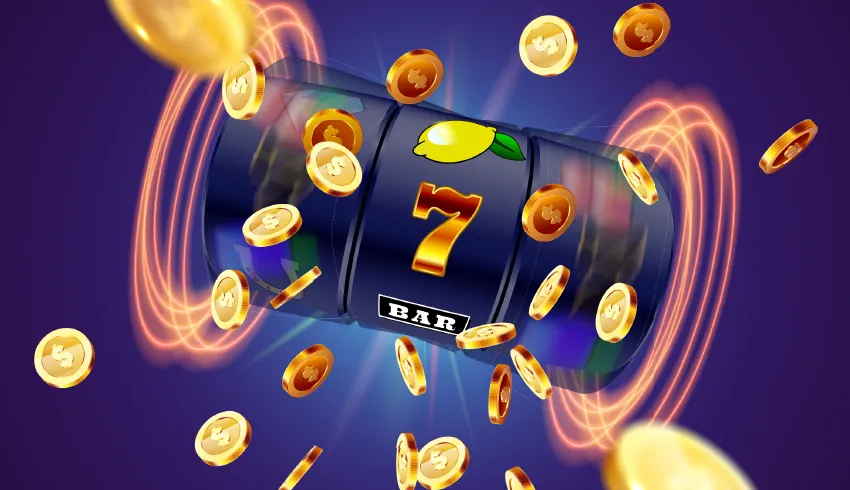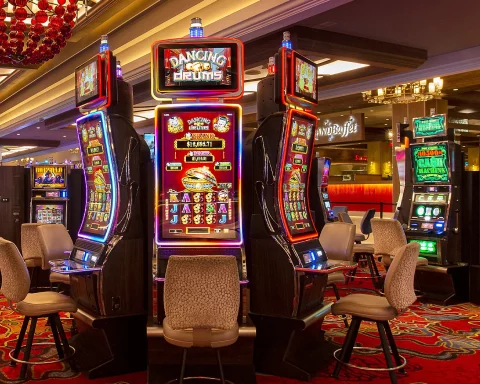Volatility is every bit as important as RTP (return to player) rates, and keen slot players are well aware of this. However, even many seasoned players are unable to properly define the term ‘volatility,’ so let’s clear things up once and for all!
What is Slot Volatility?
Slot volatility, also known as variance, refers to the balance between the frequency with which a particular slot pays out, and the value of the prizes.
Although generally expressed as being low, medium or high, volatility in fact exists on a spectrum, so it could be argued that these categories are a little vague.
In the simplest terms, low volatility slots are safer and more popular with risk-averse players, whereas high volatility slots are generally preferred by risk-lovers and high-rollers.
Players should always check the volatility of the slot they are playing, so that they know what to expect in terms of payouts.
High Volatility
A high volatility slot is one which awards fewer payouts, but compensates for this by increasing the size of the payouts. This results in greater amounts of both risk and reward.
Because of this, high volatility slots attract those who enjoy the risk, or who are holding out for a big win. The anticipation of this big win is what makes high volatility slots more exciting to some players. Also, with more progressive jackpots on high volatility slots, it’s possible for life-changing sums of money to be paid out. These slots also often also feature a more sophisticated design, with additional features and bonus rounds.
However, the unpredictability of high volatility slots can also be stressful to certain players, particularly those who may become frustrated or disheartened by long gaps between wins, and a larger bankroll may be necessary to sustain a longer gaming session.
Low Volatility
Conversely, a low volatility slot is one which pays out more frequently, but in smaller amounts, making for a lower-risk, lower-reward experience.
Low volatility slots, by awarding players with frequent small wins, are better at keeping up the momentum of the gaming session, and giving the impression that more progress is being made.
Those who enjoy longer sessions will likely benefit from playing low volatility slots the most, as they don’t require such a large bankroll and players are less likely to suffer large losses. Also, players who prefer a simple game are more likely to enjoy low volatility slots, which are often less complex in their gameplay.
But, for these reasons, low volatility slots can be less engaging for some players, particularly those who are used to the thrill of playing when huge jackpots are involved.
Medium Volatility
Medium volatility slots are, as you might expect, those which fall into the middle ground. They offer a combination of medium-sized payouts with reasonably regular frequency.
For many players, these feature the perfect balance of risk and reward, paying out often enough to keep you interested, and awarding prizes which are attractive enough that each spin is still a thrill.
Whilst these are the best option for the majority of players, medium volatility slots are not well suited to those who enjoy either extreme.
How Much Volatility is Best?
There’s no single answer to this question, because it’s really up to the individual player!
The simplicity and reduced risk of low volatility slots makes them a perfect choice for beginners, as well as for players on a budget or those who simply enjoy the entertainment factor of slots.
Because of their unpredictability, complexity, and the fact that they can be emotionally and financially taxing, high volatility slots are not recommended for beginners.
If you’re in any doubt, it’s advisable that you start with a low volatility slot and see how you get on. If the experience isn’t satisfying, you can always step up to a medium volatility game, or if you find that you love the thrill of having a shot at a huge jackpot, you can move up to high volatility games.
Essentially, it’s a matter of personal preference. However, one undeniable truth is that, no matter what type of slot you prefer to play, the best solution is always going to be playing at no wagering casinos, where players can cash out and withdraw their winnings easily without needing to fulfill any wagering requirements.
Strategies & Responsible Gambling
Gambling responsibly is part of having an enjoyable experience, and there are certain strategies that can help you to make the best of your slots gameplay, no matter how volatile they are.
Setting limits on your deposits, losses and the amount of time you spend playing can be a great way to avoid developing bad habits like loss-chasing.
Always be aware of the wager you’re making. Coin sizes vary, and it can be easy to lose track of how much you’re spending if you’re not careful.
Take advantage of bonuses. These often come in the form of free spins, and can make a huge difference to your bankroll.
Other good habits include taking regular breaks, and only playing for as long as it is fun; slots are a form of entertainment, rather than a means to make money.
Gamcare, which is run by GambleAware, offers help to those who need it.
Regulations
There are certain regulations and legislations relating to slot volatility which apply to UK operators.
The Gambling Commission has set a limit on the speed of slots, to limit the amount of money that people can lose in a short period of time. They’ve also banned the once-popular auto-play feature in an effort to curb losses, help players keep track of their bankroll, and promote healthier gambling.
It is a legal requirement that the volatility and RTP rates be available to players before they begin playing a particular slot game, so always take advantage of this information and check out how volatile a particular slot is before spending any money on it.
Read More: Exploring the Thriving World of Brazilian Online Casinos




